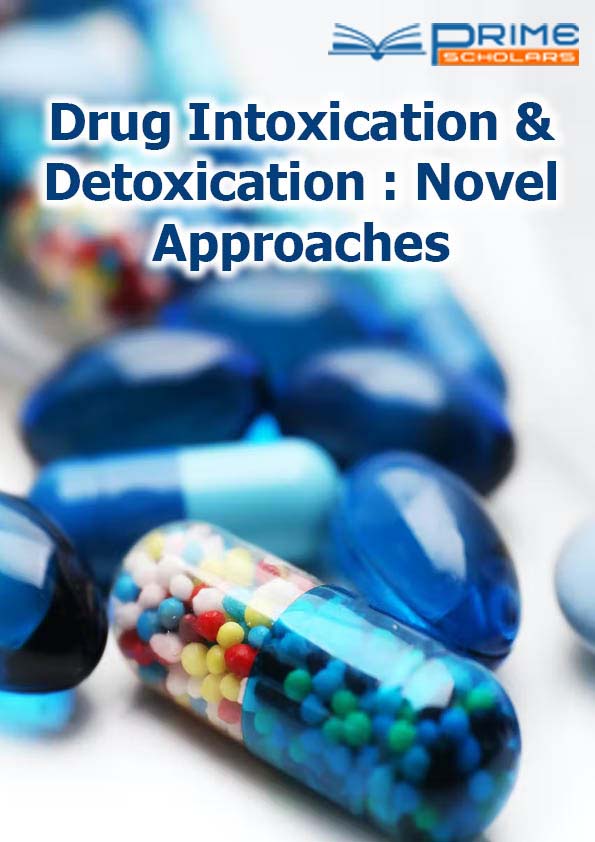Perspective - (2025) Volume 6, Issue 1
The Urgency of Understanding Acute Poisoning: Unravelling the Complex Web of Emergency Medicine
Sophie Martin*
Department of Medicine, Sorbonne University, France
*Correspondence:
Sophie Martin, Department of Medicine, Sorbonne University,
France,
Email:
Received: 13-Dec-2023, Manuscript No. DIDNA-24-18586 ;
Editor assigned: 16-Dec-2023, Pre QC No. DIDNA-24-18586 (PQ);
Reviewed: 02-Jan-2024, QC No. DIDNA-24-18586 ;
Revised: 05-Feb-2025, Manuscript No. DIDNA-24-18586 (R);
Published:
13-Feb-2025, DOI: 10.36648/DIDNA.6.1.44
Introduction
Acute poisoning stands as a critical challenge in emergency medicine, requiring swift and precise interventions to save lives. The spectrum of potential poisons is vast, ranging from household chemicals to pharmaceuticals and environmental toxins. In this commentary, we delve into the urgency of understanding acute poisoning, exploring the complexities of diagnosis, the vital role of medical professionals, and the ongoing efforts to enhance public awareness and prevention. Acute poisoning is characterized by the sudden and severe onset of toxic effects resulting from exposure to a harmful substance. The insidious nature of poisoning lies in its ability to masquerade as various medical conditions, making timely diagnosis and intervention paramount. Common symptoms include nausea, vomiting, dizziness, altered consciousness and in severe cases, respiratory failure or cardiac arrest. The diversity of potential poisons adds layers of complexity to the diagnostic process.
Description
Household products, medications, plants, and industrial chemicals all have the potential to induce poisoning, and each requires a tailored approach to treatment. The challenge for healthcare professionals lies in quickly identifying the specific poison involved, assessing its concentration and initiating the appropriate antidote or supportive measures. Emergency medicine practitioners are at the frontlines of dealing with acute poisoning cases, often facing the challenge of making rapid, life-saving decisions in high-stakes situations. The initial approach involves stabilizing the patient's vital signs, securing the airway and administering supportive care. Timely and accurate diagnosis is facilitated through a combination of patient history, physical examination, and, when available, laboratory tests to identify the specific poison. In cases where the identity of the poison is unknown, the clinical presentation becomes a puzzle that emergency medical professionals must solve. This requires a thorough understanding of toxicology, the ability to recognize patterns of toxicity and a strategic approach to decontamination and antidote administration. The collaboration between emergency medicine, toxicology specialists and poison control centres is essential for optimal patient outcomes. While emergency medical professionals play a crucial role in managing acute poisoning cases, prevention remains the cornerstone of mitigating this public health threat. Enhancing public awareness about the potential hazards in homes, workplaces, and the environment is a key step in reducing the incidence of poisoning incidents. Public education initiatives should focus on highlighting the dangers of common household items, such as cleaning agents, medications and pesticides. Emphasizing safe storage practices, proper disposal methods and the importance of reading labels can empower individuals to minimize the risk of accidental poisonings. Furthermore, educating the public about the signs and symptoms of poisoning encourages early recognition and prompt seeking of medical attention. Children, in their innate curiosity and lack of awareness, are particularly vulnerable to accidental poisonings. Household substances that may seem harmless to adults can pose a significant threat to children.
Conclusion
Acute poisoning represents a dynamic and challenging facet of emergency medicine, demanding a multifaceted approach that spans prevention, public awareness and swift medical interventions. As we navigate the complexities of diagnosing and treating poisonings, a collective effort is needed to empower individuals with the knowledge to prevent accidental exposures. Emergency medicine professionals, toxicologists and poison control experts stand as the guardians of public health in the face of acute poisoning, working tirelessly to unravel the mysteries of toxic exposure and save lives. Through ongoing education, collaboration and technological advancements, we can strive for a future where the impact of acute poisoning is minimized, and communities are better equipped to protect themselves from this silent threat.
Citation: Martin S (2025) The Urgency of Understanding Acute Poisoning: Unravelling the Complex Web of Emergency Medicine.
Drug Intox Detox: Novel Approaches. 6:44.
Copyright: © 2025 Martin S. This is an open-access article distributed under the terms of the Creative Commons Attribution
License, which permits unrestricted use, distribution, and reproduction in any medium, provided the original author and source
are credited.
